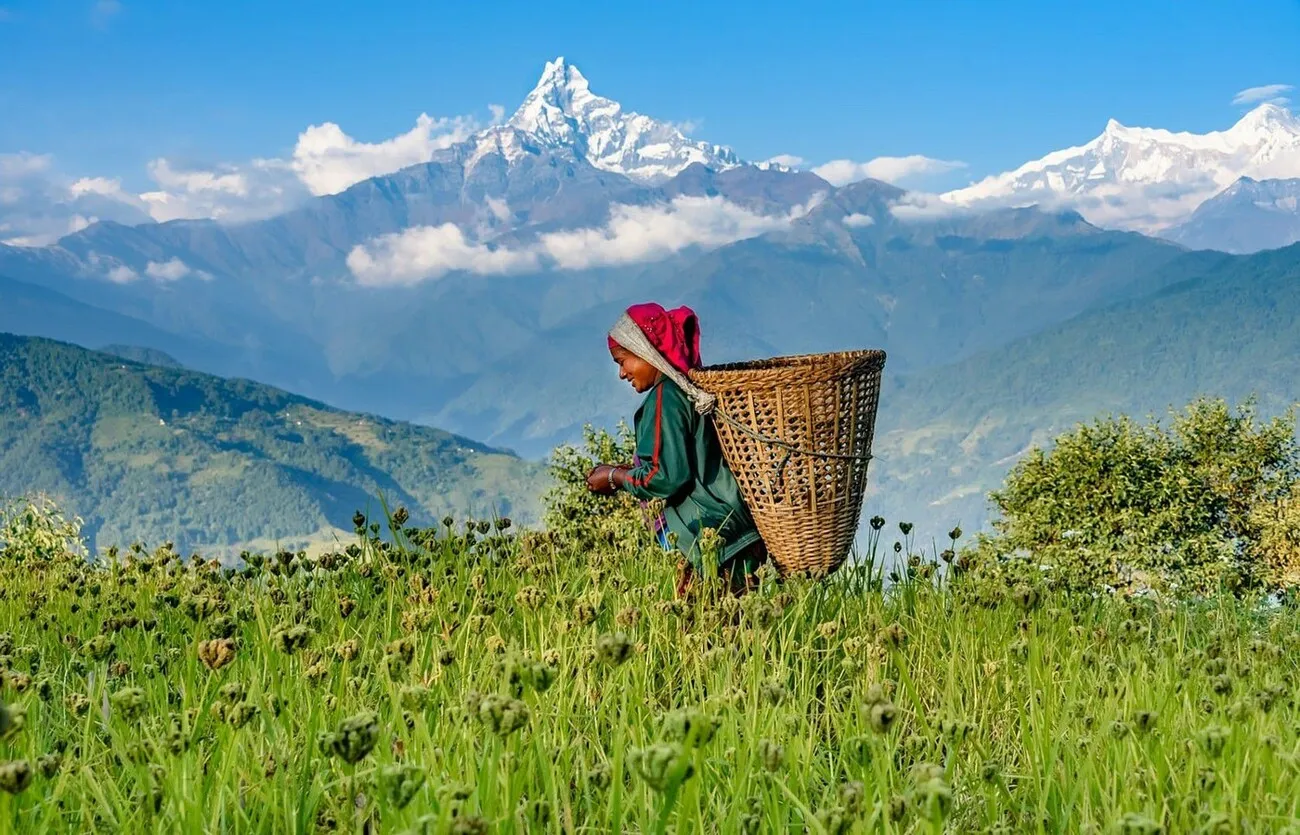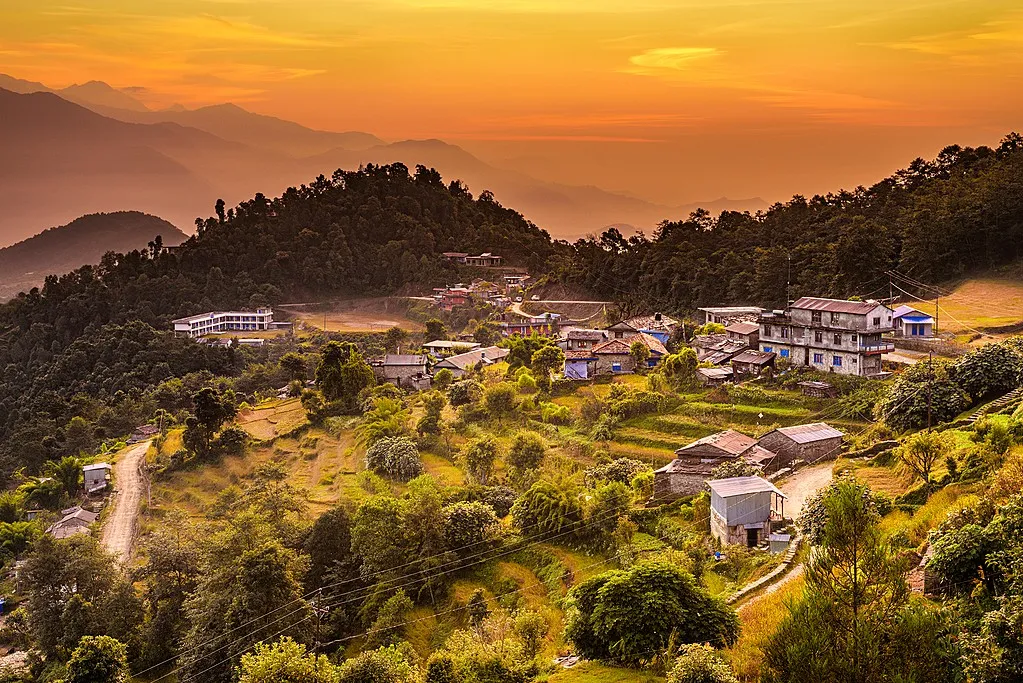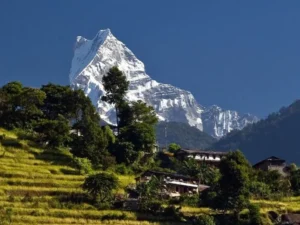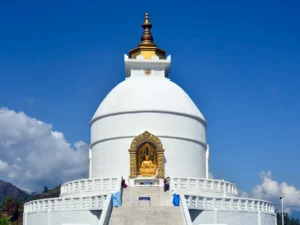Sarangkot, Australian Base Camp to Dhampus Trek
Our specialized trek packages include professional Hindi/English-speaking guides, all permits, comfortable accommodation, and complete safety support for Indian families and international travelers seeking meaningful mountain experiences. With 15+ years of Himalayan trekking expertise and Nepal Tourism Board licensing, we ensure your cultural journey is both enriching and completely secure.
Quick Trek Overview
| Trek Details | Information |
| Duration | 2-3 Days/Nights |
| Starting Point | Pokhara |
| Transportation | Private Vehicle/Cable Car |
| Difficulty | Easy to Moderate |
| Best Season | March-May, September-November |
| Group Size | 2-15 people (Private groups available) |
| Languages | Hindi, English, Nepali |
| Inclusions | Guide, Permits, Meals, Accommodation |
| Exclusions | Personal expenses, Tips, Travel insurance |
Spiritual and Natural Significance
Gateway to Himalayan Spirituality
The Sarangkot to Australian Base Camp to Dhampus Trek offers a profound spiritual connection with the sacred Himalayan peaks revered in Hindu traditions. These majestic mountains, including Annapurna and Machhapuchhre, hold deep religious significance as abodes of divine energies.
For Hindu pilgrims, witnessing sunrise over these sacred peaks creates a transformative spiritual experience. The pristine mountain environment provides ideal conditions for meditation and self-reflection, while the journey through traditional villages offers insights into mountain spirituality.
Cultural Heritage of Gurung Communities
The trek passes through authentic Gurung (Tamu) villages where ancient traditions remain beautifully preserved. These indigenous communities have maintained their unique cultural identity for centuries, offering visitors genuine insights into Himalayan mountain life.
Experience traditional Gurung hospitality through community homestays, witness time-honored farming practices on terraced hillsides, and participate respectfully in local customs. The Gurung people’s connection with nature and mountains provides valuable lessons about sustainable living and spiritual harmony.
Natural Wonders and Biodiversity
The route showcases Nepal’s incredible biodiversity through diverse ecosystems ranging from subtropical valleys to temperate mountain forests. During spring season, witness spectacular rhododendron blooms (Nepal’s national flower) painting entire hillsides in vibrant colors.
Wildlife observations include the colorful Himalayan Monal (Nepal’s national bird), various pheasant species, langur monkeys, and over 250 butterfly varieties. The rich ecosystem supports medicinal plants traditionally used by local communities for centuries.
Detailed Day-by-Day Itinerary
Pokhara to Sarangkot & Australian Base Camp Trek
5:00 AM – Departure from Pokhara
Our guide picks you up from your hotel with private transportation for the early morning adventure.
5:30–7:00 AM – Sunrise at Sarangkot (1,600m)
Witness breathtaking sunrise over the Annapurna range, Dhaulagiri, and Machhapuchhre (Fishtail) peak.
Capture panoramic mountain photos and enjoy traditional Nepali tea.
8:00 AM – Drive to Kande (1,700m)
Arrive at Kande, the official trek starting point.
Brief safety orientation and equipment check with your certified guide.
9:00–11:30 AM – Trek to Australian Base Camp (2,065m)
Moderate 2-hour uphill trek through rhododendron forests and stone staircases.
Arrive at Australian Base Camp for rest and scenic views.
Afternoon Activities
Explore the ridge-line viewpoint offering 360° mountain panoramas.
Relax at a comfortable teahouse with mountain-view rooms.
Evening
Traditional dinner with fellow trekkers. Optional cultural program featuring Gurung music and storytelling.
Accommodation: Mountain teahouse with en-suite facilities
Meals: Breakfast, lunch, dinner included
6:00 AM – Sunrise at Australian Base Camp
Enjoy unobstructed views of the Annapurna massif. Professional photography guidance available.
8:00–9:00 AM – Trek to Dhampus Village (1,650m)
Easy 1-hour walk through picturesque mountain landscapes to the authentic Gurung village of Dhampus.
9:00 AM–3:00 PM – Cultural Immersion
Explore stone houses with slate roofs, visit a local Buddhist monastery, and interact with friendly village families.
Learn about traditional farming methods and local lifestyle.
Lunch Experience
Authentic Gurung meal prepared by homestay family, featuring dhindo (traditional porridge), gundruk (fermented vegetables), and fresh mountain produce.
Afternoon Activities
Climb to Dhampus View Tower for panoramic mountain photography.
Visit traditional craft workshops and support local women’s cooperatives.
3:00–4:30 PM – Descent to Phedi
Gentle 1.5-hour downhill trek through terraced farmlands to Phedi village for return transportation.
5:00 PM – Return to Pokhara
Comfortable 45-minute vehicle ride back to Pokhara city.
Accommodation: Dhampus homestay or Pokhara hotel
Meals: Breakfast, lunch included
Morning Activities
Participate in traditional farming activities with local families, learning organic terrace agriculture and irrigation techniques.
Cultural Workshops
Hands-on experience with Gurung crafts, traditional cooking, and medicinal plant identification.
Community Service (Optional)
Engage in community development projects supporting local schools and infrastructure.
Farewell Ceremony
Traditional Gurung blessing ceremony and cultural dance performance by village elders.
Accommodation & Meals: As arranged (depending on premium package selection)
Best Time to Visit
Peak Season (October-November): Perfect weather conditions with crystal clear mountain views and comfortable temperatures (15-25°C days). October offers the clearest skies for mountain photography and ideal conditions for cultural festivals including Dashain and Tihar celebrations.
Spring Season (March-May): Spectacular rhododendron blooms transform the landscape into colorful displays. Mild temperatures and excellent visibility make this ideal for nature photography. April particularly favors wildflower enthusiasts and wildlife observation.
Winter Trekking (December-February): Lower elevation makes winter trekking possible with crisp, clear mountain views. Temperatures range 0-10°C during daytime with cold nights (-15 to -20°C). Fewer crowds provide intimate cultural experiences.
Monsoon Season (June-August): Heavy rainfall creates challenging trail conditions with muddy paths and obstructed mountain views. Limited visibility makes this season unsuitable for mountain photography, though lush green landscapes offer different beauty.
Festival Calendar:
- Tamu Lhosar (December 30): Gurung New Year celebration with traditional dances and community feasts
- Buddha Jayanti (April/May): Buddhist celebrations at local monasteries
- Dashain/Tihar (October): Major Hindu festivals with cultural programs
Safety Guidelines and Altitude Management
Professional Safety Protocols
Our experienced guides carry comprehensive first aid equipment including emergency oxygen supplies, altitude monitoring devices (oximeters), and emergency communication systems. All guides receive regular safety training and hold valid wilderness first aid certifications.
Altitude Acclimatization Support
Although maximum elevation reaches only 2,065 meters, we monitor all trekkers for altitude-related symptoms. Our guides recognize early warning signs and implement appropriate response protocols including rest stops, hydration management, and descent procedures if necessary.
Emergency Procedures
24/7 emergency evacuation support through helicopter rescue services ensures rapid response to serious medical situations. Comprehensive travel insurance coverage is mandatory for all participants, and we assist with evacuation coordination when required.
Weather Safety Measures
Daily weather monitoring helps avoid dangerous conditions including thunderstorms, heavy rainfall, and extreme temperature fluctuations. Flexible itinerary adjustments ensure trekker safety while maintaining cultural and scenic experiences.
Trail Safety Standards
Well-maintained stone-paved trails with clear red and white markers reduce navigation risks. Regular trail condition assessments identify potential hazards including loose rocks, steep sections, and seasonal challenges.
Health Recommendations
Basic fitness level sufficient for 3-5 hours daily walking on moderate terrain. No technical climbing skills required. Pre-trek health consultation recommended for participants with heart conditions, respiratory issues, or mobility limitations.
Equipment Safety
Professional equipment inspection ensures all safety gear meets international standards. Emergency shelter, communication devices, and weather protection equipment accompany every group.
Cultural Guidelines and Etiquette
Respectful Interaction with Gurung Communities
Approach local families with humility and genuine interest in their culture. Use traditional greetings (Namaste with palms together) and show respect to village elders. Learn basic Nepali phrases to demonstrate cultural appreciation.
Photography Ethics
Always request permission before photographing people, religious sites, or private property. Avoid intrusive photography during religious ceremonies or personal family moments. Respect cultural boundaries regarding sacred objects and rituals.
Dress Code Requirements
Dress modestly covering legs and shoulders, especially when entering homes and religious sites. Remove shoes before entering houses and temples. Avoid revealing clothing that may offend conservative mountain communities.
Religious Site Behavior
Maintain quiet, respectful behavior at Buddhist monasteries and Hindu shrines. Follow guide instructions regarding appropriate conduct, offerings, and participation in religious activities. Avoid pointing feet toward religious objects or people.
Gift-Giving Guidelines
Support local economy through direct purchases from village cooperatives rather than individual handouts. Avoid giving money or gifts directly to children, which can encourage begging behavior. Focus on meaningful cultural exchange over material transactions.
Environmental Responsibility
Follow Leave No Trace principles by staying on established trails, properly disposing of waste, and minimizing environmental impact. Use refillable water bottles and avoid single-use plastics that burden local waste management systems.
Meal Etiquette
Use only your right hand for eating and receiving items. Try traditional foods respectfully even if unfamiliar. Express gratitude for homestay meals prepared with local ingredients and traditional methods.
What’s Included vs What’s Not
What’s Included in All Packages:
Professional Services:
- Certified Hindi/English-speaking trek guide
- All required permits and documentation
- Government taxes and service charges
- Pre-trek safety briefing and orientation
Accommodation:
- Teahouse/homestay accommodation as per itinerary
- Clean bedding and basic room amenities
- Shared/private bathroom facilities (package dependent)
Meals:
- Traditional Nepali breakfast, lunch, and dinner
- Fresh mountain spring water during trek
- Herbal tea and seasonal fruits
- Vegetarian and non-vegetarian options available
Transportation:
- Private vehicle Pokhara to trek starting point
- Return transportation to Pokhara
- Cable car tickets (premium package)
Safety Equipment:
- First aid kit and emergency oxygen
- Altitude monitoring equipment
- Emergency communication devices
- Weather protection gear
What’s Not Included:
Personal Expenses:
- International/domestic flight tickets
- Nepal visa fees and airport taxes
- Personal travel insurance (mandatory)
- Tips for guides and porters
Additional Services:
- Extra meals and beverages in Pokhara
- Laundry and hot shower charges
- WiFi and charging fees at teahouses
- Personal shopping and souvenirs
Optional Activities:
- Helicopter sightseeing flights
- Additional cultural programs
- Photography permits for special areas
- Personal porter service (available separately)
Emergency Costs:
- Medical evacuation expenses
- Trip cancellation or delay costs
- Personal equipment replacement
- Emergency accommodation changes
Start your transformative Himalayan journey with complete confidence in our professional safety support, cultural expertise, and commitment to meaningful travel experiences. Book your sacred mountain adventure today and discover why thousands of pilgrims choose our specialized spiritual tourism services for their Nepal journeys.
Ready to experience Nepal’s spiritual mountains? Contact our Hindi-speaking experts now for personalized trek planning and immediate booking confirmation.
Frequently Asked Questions
Sarangkot to Australian Base Camp to Dhampus Trek is a 2-3 day beginner-friendly Himalayan journey offering spectacular mountain panoramas and rich cultural immersion at elevations up to 2,065 meters, starting from Pokhara. This accessible circuit connects three premier viewpoints while passing through traditional Gurung villages, providing authentic homestay experiences and stunning views of Annapurna, Dhaulagiri, and Machhapuchhre peaks without requiring high-altitude trekking experience.
User Reviews
Be the first to review “Sarangkot, Australian Base Camp to Dhampus Trek” Cancel reply
General Inquiries
There are no inquiries yet.








There are no reviews yet.